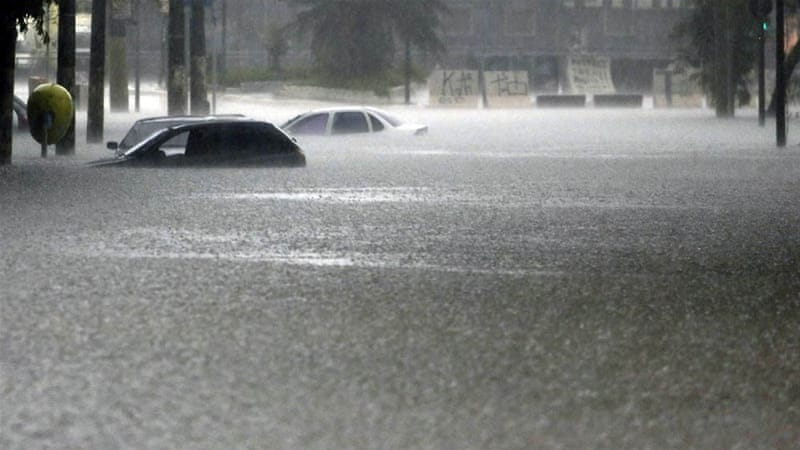Kerala agriculture minister V.S. Sunil Kumar that the loss that Kerala had suffered was worth more than Rs. 20,000 crore. He added that a decision had been taken to study soil terrain to understand why the disaster happened.Just about every report on the monsoon floods in Kerala mentions that they're the worst in a century. So while it might be interesting to study the soil I think it would be cheaper to simply study old photos of Kerala roadways and pedestrian walkways. From this exercise it would be a hop and skip to the realization that rain can't soak into the ground if the ground is paved over with impermeable materials. And when the rain is so heavy it creates flooding in any circumstance, the impermeability of road surfaces is going to make the flooding much worse.
I have pointed out the problem in other parts of the world and right here in the USA, and so have countless others. Remember my 2015 post on kayaking in downtown Houston, Texas after a mega rainfall? Remember the photo? Here it is again; maybe someone will send the agriculture minister a copy:
To quote myself from that post:
While the modern big city requires miles and miles of streets, sidewalks, plazas, and highway overpasses, it's written nowhere that the paving for these has to be virtually impermeable to the rains.
As I noted in Optical Illusion in Sao Paulo, no small part of the frequent flooding in that city is simply rainfall that can't soak in -- and then the water, with no place to go, collects debris that clogs storm drains, creating even worse flooding:
That's surely the same for virtually all other flood-prone modern cities. Which, it turns out, isn't a good thing for precious underground water resources because they need to be recharged by rainfall.
Permeable paving (aka porous asphalt and concrete) isn't a pie-in-the-sky idea; it's part of New York City's Green Infrastructure Plan (PDF), and not too long ago all paving -- brick and cobblestone -- were of course permeable constructions.
As to whether modern buildings would be negatively impacted by large amounts of rain sinking into the ground near their foundations, I don't know. But I figure if engineers can make a river run uphill, as they did in California, there would be workarounds to any such problem.
What we can't keep doing in this age of megapopulations is expecting extreme weather to conform to ideas of modernity created in an intellectual vacuum that ignored the natural world.
**********


No comments:
Post a Comment